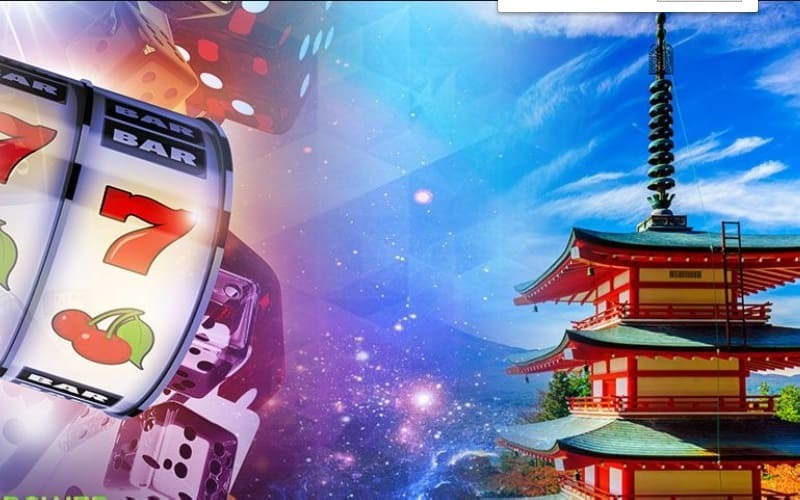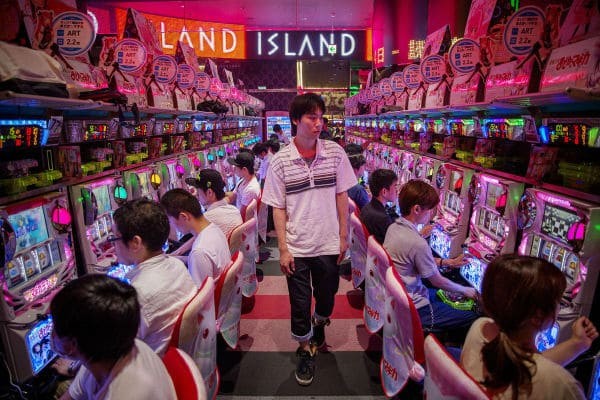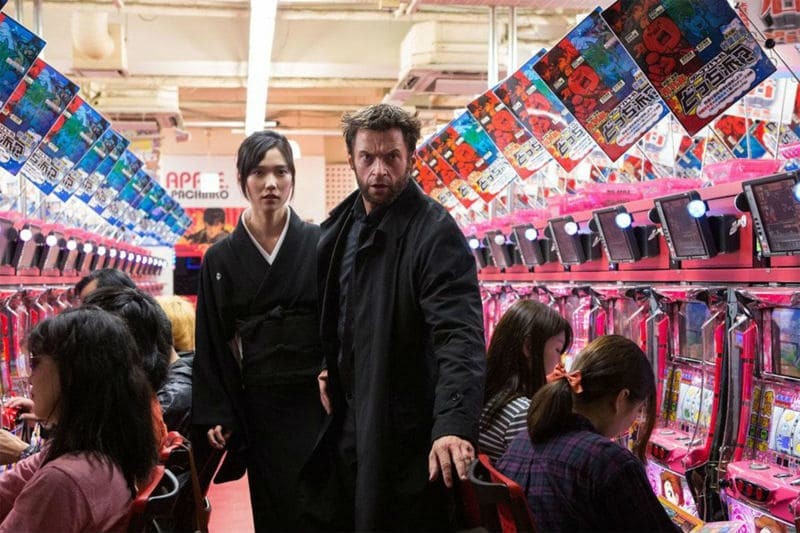
Ever since the Tokugawa Shogunate ended — terminating feudal society and national policy of isolation, paving the way for the Meiji restoration and turbulent war period transiting the empire into a liberal democracy — the world has witnessed and experienced sublime yet occasionally frictional relations between Japanese customs and traditions, and other cultures and novelties.
Ensuing interactions, ranging from rejection to acceptance, often ending in adjustment and improvement, have been of particular interest of humanities, social science, and business: to observe, elaborate or participate as two interpolating yet comparable realms meet and greet each other is always quite an experience, regardless of personal or collective inclinations and points of view.
Gambling stands out as one of a few plank owners in this exchange.
As the universal companion of humans since the dawn of time, servicing omnipresent sensation of exploring luck by choices to increase balances…
It has been present in Japan since the 7th century, long before the first samurai and shogun appeared. The Nipponese people began to gamble in the Nara period, marked by the significant influence of neighboring China to the island’s economy, society, writing system, fashion, and religion (Buddhism).
Just as the cradle of human gambling gave birth to the first pastime in history (liù bó, the game of six sticks) around 2027 BC and the earliest playing cards printed on paper sheets in 1005 AD, across the Whale Sea came ban-sugoroku, dice game almost identical to backgammon.
From that moment on, gamblers’ scene in the Land of Rising Sun has been vivid and stunning.
Ten centuries later, when Black Ships of the U.S. Navy, led by Commodore Matthew C. Perry, arrived at Tokyo Bay in the late Edo period and opened trade lines with western world — succeeding where Portuguese and Dutch failed repeatedly earlier, intransigently rejected by anti-Western sentiment — Japanese people prone to bets and cards, wagers and dices didn’t need 10-inch Paixhans naval guns to embrace give-and-take.
Instead, gambling cultures started to mix and communicate — seamlessly, allied by centuries of playing different yet similar games, connected by invisible bridges spanning across vast oceans and rising on pillars of hopes defined by chances.
Seeds of Obsession
Driven by personal proclivities and available options, the tempo of exchange significantly picked up at the beginning of the 20th century.
The altering event was staged by hybrid game — a mix of Chicago Corinth Game, Old English Bagatelle, the British Circle of Pleasure Game, and Japanese ingeniosity.
Changing the landscape of gambling forever, it became an instant nationwide sensation. The gaming pulse has been throbbing in the rhythm of rolling, spinning and pushing ever since.
Grounded to the halt on occasions yet reemerging like a Phoenix, gambling history in the Land of Rising Sun paints vibrant mishmash picture of…
Frantic entertainment, punctuality, dedication, clinical precision, group mentality, dexterity, emotionality, aggressiveness, and critical thinking skills alternating between second to none and — none.
The advanced technology set the frame on the painting with the myriad of innovations at the end of the last century. Restrictive regulations’ framework which left open peculiar pathway to play unhindered for money in parlors and gaming arcade centers put the artwork on the wall of national tradition.
But it was Japanese players which, in a signature devotion to games of luck and skills in the Far East, propelled the country into the top three gambling nations in the world today.
Considering how long and by whom such masterpiece has been painted…
Nothing less could have been expected.
The first and earliest reference of the gamble in Japan would take us way back to Nihon Shoki (Chronicle of Japan), the 31-volume official history of Japan, written by a committee of scholars in 720 AD.
The second-oldest book of nation’s classical history — serving as a more detailed sequel to the Kojiki(Record of Ancient Things), the oldest chronicle — mention Emperor Temmu passing the time in 685 AD while playing ban-sugoroku.
His successor, Empress Jito (third of eight women ever to take on the role of a queen regnant), banned the game, setting the stage for pattern resembling gambling regulations in other countries.
Regardless of the decree, at the height of the Heian Period (794-1185), gambling was rampant in the capital, present-day Kyoto. Just about anything could be used to wager: horse races, cricket or cockfights, and various fanciful competitions.
Professional gamblers (bakuto) emerged, resulting in nine edicts prohibiting gambling between 1225 and 1284.
Strict laws against playing games were still in force in samurai era of the Edo Period (1603-1867), with offenders from lower classes being sentenced to floggings, exile, and even death; bakuto were punished by heavy fines.
On the other hand, the warrior class — quite naturally, ignoring injunctions — enjoyed in nomu, utsu, kau(drinking, gambling, and whoring).
Pachinko Emerges
Ultimately, not able to suspend excess, authorities instituted a distinction between light betting and larger bets in 1718. Smaller gambling proclivities, particularly lotteries, were tolerated to control the population.

Entwined with nationwide affinity, variety of games emerged in the form of chobo-ichi, bin korogashi, oome-kome, shishita, shoso-shiroky, kitsune, yoido, karuta, or zanmai — all dice or card games in several variations, resembling more or less worldwide counterparts. (Zanmai is the closest to Japanese blackjack you’ll ever get.)
By the end of sakoku (isolationist foreign policy), gambling was widespread equally among the townsfolk and in rural areas. In time, it became so popular that the first law in 1923 was required to regulate the Japanese market.
In effect, the soil was fecund enough and conditions were ripe to welcome the change with long-lasting impact, which came in the form of a simple game.
Player uses a lever to launch a small steel ball (.43 inches in diameter) into the vertical playing field; once it loses the momentum, the ball falls into a large number of brass pins, nails, and catchers. Each catcher represents a pocket offering variable payouts, including the jackpot. The goal of the game is to guide and collect as many balls as possible by finding the sweet spot. At the end of the gambling session, they are exchanged for tokens or money.
Two countries offered baseline while the Japanese took care of the rest.
In the 1920s, Chicago gaming manufacturers introduced the Corinth Game conceived as a children’s version of Old English bagatelle (a billiard-type game played on a horizontal surface with a goal to roll a ball past wooden pins acting as obstacles). Instead of wooden pegs, the game introduced brass nails.
(Interestingly enough for the history of yet other cult game, creators also increased the bagatelle plunger to service larger balls, giving way to pinball.)
Named Korinto Gemu (Corinthian Bagatelle in Japanese), it enjoyed an initial burst of popularity as children attraction in local candy stores: owners would put the game in the corner of the shop, drawing kids in to play and buy, or even get as a reward, candies and fruits.
By the end of the decade, the game was a store staple, nicknamed by children ‘pachi-pachi’ due to the unique cacophony of clicking and cracking sounds machine produced.
Meanwhile, in Europe, the British played the Circle of Pleasure as a popular pub gambling device taking coins as deposits and withdrawals. Also based on slingshot-style pinball, it stood in a vertical position with scoring pockets for the ball to fall in. Distributed worldwide, it soon came to Japan.
In 1929, with a space at a premium even in those times, the Japanese decided to morph Korinto Gemu features with compact, wall-based Circle of Pleasure machines. By mixing brass nails with scoring pockets…
They gave birth to the first pachinko machine and made it interesting to a mature audience.
Revolutionary Evolution
The two-fold outcome was astounding. In 1930 the very first hall opened in Nagoya, taking pachinko out of the candy stores directly into gambling parlors.
Once there, the game took hearts and minds, and wallets, of Japanese players by storm and catapulted itself into a national mania.
Popularity was such that a year later parlor in Osaka was banned; in 1932, another one in Fukuoka faced the same fate.
By the beginning of the war, the manufacture and sales of pachinko machines were strictly prohibited. The deadliest conflict in history resulted in understandable gambling stagnation in Japan.
The end of hostilities brought the U.S. occupational troops and a significant surplus of steel balls; with the former came demands for slot machines while the latter provided apparatus for a suitable substitution.
Void of any other options in the country at the time, the first post-war pachinko parlor opened at the U.S. Army base in Fukuoka.
Popularity sparked instantly
So much that the Josen Amusement Park, which operated pachinko parlor before the war, reopened, too. The man behind this business was Takeichi Masamura, widely accredited as the father of modern pachinko.
He created changes by adding nails into the unique arrangement, enabling for balls to fall randomly through playing field, in addition to introducing the continuous ball feeders’ play. Catalyzing perpetual process of pachinko evolution, this modification became to be known as Masamura Gauge All 15.
(To honor his achievements, the company he founded to manufacture pachinko machines established Masamura Pachinko Museum in Nagoya.)
The story of years to follow resembles, in a way, regulations history of the USA.
Driven by increased chances to win, gamblers poured into parlors, and the number of pachinko machines rose close to 12,000 nationwide; soon enough, it became a social problem which resulted in yet another ban and popularity drop.
“Japan ranks so high among leading gambling nations”
With the next technical innovation — tulips, expandable flippers enlarging the width of catcher which increased players’ chances — pachinko was revived and growth reinvigorated.
Pachislots & Parlors
Following the footsteps of American Mafia, Yakuza got involved in the business which, in turn, resulted with restrictive legislative framework banning the land-based gambling in Japan (excluding the lottery, horse racing, and bicycle, motorboat, and motorbike betting).

Punctually governing the nation, Diet — the national bicameral legislature — was also well aware of tax revenues pachinko parlors and gambling created. Exercising wise variant of the predecessor to don’t ask, don’t tell policy…
A rather peculiar loophole in the law was intentionally left open: gamblers cannot cash-in balls in parlors but at separate venues (tuck shops), in no way related to pachinko operators, ensuring that prominent part of national customs will be void of illegal activity as gambling remains prohibited but available to everyone.
The next progression — during video games craze of the 1980s, a harbinger of eSports to come — equipped pachinko machines with displays offering mini-games experience (like virtual slots) and futuristic design in line with arcade games.
Not much later, in yet another smooth morphing with the western customs, pachinko merged with classic Vegas-style slots creating yet another iconic game of Japan — pachislots, known also as pachisuro.
A three-reel, five-paylines pachislots, run by coins, with highly regulated spin speed and compulsory stop time allowing for each reel to be separately brought to halt, have technical characteristics which significantly increase opportunities for players to involve skills (lightning reflexes, precision, perception) in the otherwise luck-based game.
Furthermore, pachisuro possess guaranteed payout (Tenjo), governed by a controlled number of games during which the winnings must happen. They also have integrated progressive mapping in the form of Stock feature, enabling missed bonuses to be collected and added later to the next one, which enables Renchan, a possibility of several bonuses to be played one after another.
By combining the unique setup offering a real possibility of winning with a memento of ‘pachi-pachi’ games not only by name but sounds, too, pachislots nowadays stand almost toe to toe with pachinko games in terms of popularity.
Quantifiable Paint Brushes
To be precise, as of December 2018, there are 5,125,500 machines (pachinko and pachislots) in 12,910 parlors in Japan. It amounts for close to one machine per 25 inhabitants…
All of them gambling at the establishment like no other.
During the day and in the evening, pachinko parlors are intimidating, extremely noisy places with deafening music, lurid blinking lights, and cigarettes’ smoke clouds at the verge of suffocation, reverberating frantic energy of swift players’ moves.
Youngsters and elders scream, swear, keep punching screens in ecstasy, or play calmly, randomly changing devices — either way hypnotically united in obsession as they keep feeding machines with steel balls, honed in only on their sounds, often forgetting playing wisdom and allowing passions to take the better of them.
In the morning, the professionals arrive. They wait in lines to play ‘pregnant machines,’ full of Stock and Renchan. They know all the stats, they know exactly which machines to play, their anticipation detectors are top-notch, and all of them want to play the same ones: those fed the night before.
The crown jewels of all machines are shindai — brand new devices paying out without the need to be fed first. To play on them, patrons make reservations in advance or patiently wait to get a shot at.
Calling in sick to exploit the opportunity at grand opening events comes with a territory: shindai, purposefully advertised on trains and in front of parlors, remains very hot for week or two, and afterward, it is déjà vu all over again.
To gaijin, a foreigner in Japan, this may look surreal, but it’s just the way Japanese people gamble.
Financial data put the picture in a telling perspective.
In 2018, land-based pachinko and pachislots generated gross gambling turnover of $191.11 billion, according to H2 Gambling Capital.
(According to Japan Automobile Manufacturers Association’s report on the motor industry in 2018, overall national vehicles export is $150.36 billion.)
In the category of all gambling gross players’ wins, pachinko market is worth $19.10 billion while pachislots are close to $13.85 billion; the cumulative sum amounts for almost 70% of all wins in the country (including the lottery, horse racing, and bicycle, motorboat, and motorbike betting).
Consequentially, Japan ranks third in the world by all gambling gross wins by player location, trailing only the United States and China (including SARs, which is to say, Macao).
Considering online gambling is strictly prohibited, too — excluding the lottery and internet wagering on sports — an assumption could be made that the iGaming industry is void of Nipponese national proclivities; it would be incorrect.
Japan ranks second in the world by interactive players’ gross gambling wins, with the United Kingdom leading the pack.
Consequences and Mentality
Not surprisingly, more than a few social problems occurred in the past.
Ten years ago, it was not uncommon to see a mother cradling baby while playing pachinko, one ball after the other, or to spot coatless children running in and out of parlor in the winter to play in the parking lot as parents carelessly enjoyed games.
After a couple of highly publicized cases of kids suffocating in cars while parents played pachinko, rules not allowing children on-premises were instituted; owners put up prints of a child on a wall, with message‘Mom, don’t forget about me.’
Since Japan’s society is based on women in control of household finances — men provide with means for living while wives are less likely to have a daytime job — housewives are quite a frequent target of parlors’ advertising campaigns. They often have more time at hand, and money, to spend.
Hence ‘ladies day’ promotions including even ‘women only’ devices.
Just as is the case with any gambling game anywhere in the world, pachinko and pachislots can be an equal opportunity vice whenever players forget who the real gambling ruler is and don’t approach pastime prudently and responsibly.
As of 2018, approximately “3.2 million adults in the country were grappling with gambling addiction or had suffered from it in the past,” according to Japan Times.
It amounts for 2.53 percent of the population, which is a rather low figure, all taken into consideration.
Nonetheless, Japan tackles it with a customary sense of duty and intends to use facial recognition technology to identify individuals manifesting addiction challenges.
Compounding this effort is the latest national gambling expansion (2018) by bill authorizing opening of three land-based casinos integrated into tourist resorts with hotels, conference halls, and shopping facilities. In effect, this is the legalization of brick and mortar halls.
Nagasaki, Osaka, Wakayama, and Hokkaido already expressed interest, recognizing economic potentials.
Initial projections by the Daiwa Institute of Research estimate that three resorts could generate impact close to $47 billion, followed by $18.8 billion annually upon opening.
To further suppress problem gamblers and addiction, measures implemented by the new law include limiting “local people to visit casinos up to just three times per week and 10 times per month by using government-issued My Number identity cards, embedded with IC chips, to count their visits.”
In addition, all residents will be charged $56 entrance fee for casinos, while foreigners will be allowed to enter free of charge.
The effects of the latest reform will be visible in mid-2020 when the first integrated resort is likely to open, and upon deciding on no less than 331 detailed points of law without Diet debate.
Gaming, Bushido Style
All in all, after thirteen centuries of painting — a riveting, unique and unprecedented gambling picture of a country with 6,852 islands, one of the eight great powers in the world, may leave gaijin in awe, indeed.
Sooner rather than later, though, majority of tourists in Japan join local gamblers of all types, compelled to try a few sessions at the parlor.
It’s understandable.
Pachinko and pachislots are two of the very few national passions which rose from seamless, effortless interaction and exchange with the west. Japan embraces things slowly, so to indulge in what took them by blitz is worth a try. (A closer look, in fact, shows just two separated prongs of the same appetite meeting again, which only underlines the universal character of gambling throughout history.)
While gambling in the parlor, foreigners can experience a fragment of…
The only place in the world where patrons test chances and skills rather honestly (this is who we are), with respect to tradition (this is how we do it), showing significant rectitude, courage and loyalty (we don’t falter, we face the odds, and we know why we do so), as they honor their choices with benevolence (it’s a question of a free will, and we take it with privilege)…
No matter what comes their way or in return.
Now, to play for money professing Bushido values — equally accepting both sides of onmyōdō, the way of Yin and Yang — that must be something.
It also may explain why Japan ranks so high among leading gambling nations, and…
Makes us wonder what would happen if such immersive bug would catch up with the rest of the world, not even remotely disciplined as the people in the Land of Rising Sun, which just might be the sole reason why they can balance the whole package.
After all, everyone carries its own weight, even if it originates from 0.012 lbs steel balls.




Be the first to comment